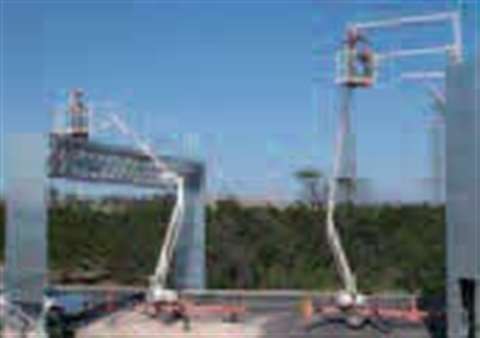Outsourced
01 May 2008

Equipment reliability is a number one priority at Kennards Hire, yet we don't have a single mechanic or workshop in our entire organisation. This has been achieved by adopting a strategy of outsourcing equipment repairs to our suppliers, a strategy that has led to a reduction in repair and maintenance costs from around 14% of annual sales 10 years ago to just 5.2% now.
The starting point for the outsourcing is a set of pre-established arrangements with our suppliers, and always more than one supplier for a particular range of equipment. There's a schedule of pricing that goes with that, and a system of guarantees.
This means, first of all, that we know absolutely what it's going to cost us every time we need to get a job done. We get a quote on the repair, and we often have standard prices for typical repairs. The second thing that is important is that we get guarantees on everything that is repaired. So if it comes back from the field with the same problem, then it goes back and they have to fix it again.
In the businesses I've run where we have had our own workshops, you never ever got a guarantee on a repair from your own mechanic.
The other thing we found is that having our own workshops didn't mean that we were quicker getting equipment back to our locations. It was actually slower, because the machine has to be taken to the workshop, it has to sit in a queue, and the workshop then has to schedule the work. When we first started this process at Kennards Hire we worked out we could have opened two and a half more stores with the equipment that we had lying around in our various workshops.
In many instances now we actually get a 24-hour turnaround for equipment that we send out to be repaired. We are talking about not very large machines, but we have 32-foot scissors that are maintained by JLG for us in Australia. They have a fleet of service vans that come to ourlocations and that do an on-site repair.
Minimize maintenance need
We never send a mechanic out to a job if a piece of equipment has broken down. Instead, our immediate response is to deliver another one. In our experience, rather than send someone out, we have just learnt that the simplest and most customer-friendly way to sort out a breakdown on site is to take the customer another one.
There are other things that contribute to the low repair and maintenance costs. We maintain a very modern fleet-our average fleet age is less than three years, and over the past five or six years we have really focused on driving the fleet age down.
We also have programmed replacement of key assets and stick very much to standard makes and models. We put a lot of time and effort into researching what is the best make and model, and then we negotiate a deal to put that machine throughout our network. On all of our products we have an arrangement with the manufacturer where at the end of a set period of time, or number of engine hours, that equipment will go back at a pre-established price. And we have an agreement on what the new one will cost us. I think this helps us keep the fleet modern; it allows us to manage our capital expenditure as a business. We think it has meant that our repair costs have continued to come down.
Another aspect of fleet management is our reliability improvement team. They meet every two weeks and their sole purpose is managing the reliability of the entire fleet. They are sourcing information from around the company – such as what equipment is causing problems; information on breakdowns; and comments from our customer surveys (which we do four times a year). It is the job of the improvement team to improve fleet reliability, whether that means talking to the manufacturers about modifications, changing our equipment servicing process, or even changing the instructions/information that is given to the customer.
Getting to where we are now has taken a lot of work and many years of close co-operation with our suppliers. But, as the numbers show, the effort has been worthwhile.






